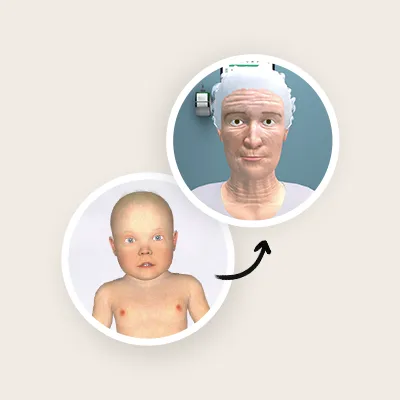Competency-Based Education with Virtual Patients
A learner-centered approach is one of the key pillars of Competency-Based Education. It closes the gap between the academic world and the real needs of workplaces by providing a personalized learning path combined with a set of competencies, knowledge, skills, abilities, and behaviors.
By embracing this strategy, educational institutions end up providing a more valuable experience. Shifting towards the use of defined competencies required for practice, staged progression of increasing responsibility/independence, tailored learning, and programmatic assessment. In three simple words, this approach offers flexibility, relevance, and value.
Domains of the Clinical Competencies
In 1998, six domains of clinical competencies were identified by the Accreditation Council on Graduate Medical Education (ACGME): patient care, medical knowledge, practice-based learning and improvement, interpersonal and communication skills, professionalism, and systems-based practice. [1]
Fifteen years later, the CanMEDS Framework in Canada redefined physician training, outlining seven key roles: medical expert, communicator, collaborator, manager, health advocate, scholar, and professional. These advancements represent a crucial evolution in competency-based medical education, aligning training programs with contemporary healthcare demands. [2]
Patient-centric care with Body Interact
Body Interact enables healthcare professionals to simulate interactions with virtual patients, enhancing their understanding of patient perspectives, needs, and concerns. By enabling students to take charge, this approach actively involves them in their learning process.
Why do Virtual Patients contribute to competency-based education?
- Prepares for the transition from the classroom to the different healthcare roles and settings
- Delivers a safe and controlled environment (both for students and ‘patients’)
- Engages and captures intrinsic motivation, fostering mastery and encouraging lifelong learning
Educators have a key role to play: they must combine teaching, assessing, and role modeling the range of identified competencies. When involved in learners’ clinical practice, either with virtual patients or with real ones, it is essential to balance patient safety with learners’ professional development.
In conclusion, Competency-Based Education prepares healthcare professionals to meet the evolving challenges of healthcare. By emphasizing practical skills, critical thinking, and patient-centered care, this educational model ensures that learners are not only knowledgeable but also capable of applying their understanding in real-world clinical settings.









